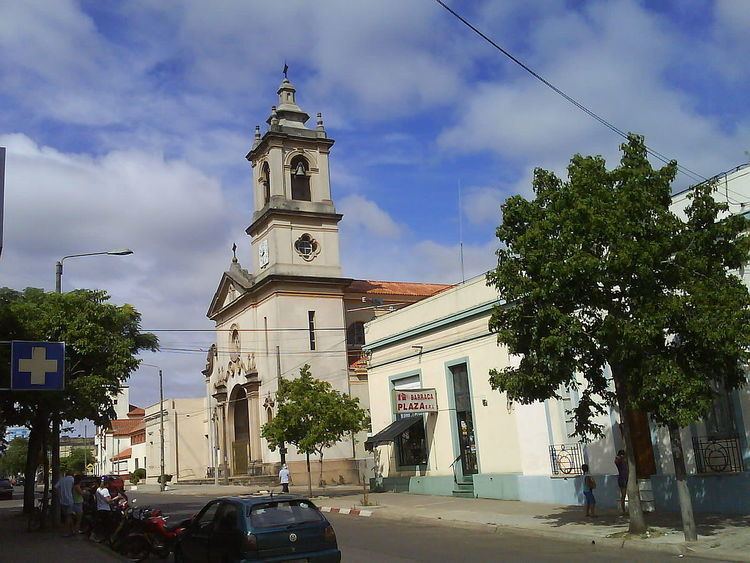Founded September 12, 1852 Elevation 121 m (397 ft) Population 40,658 (2011) | Founded by Don Carlos Catalá Demonym(s) artiguense Local time Saturday 2:42 PM | |
 | ||
Weather 32°C, Wind SE at 10 km/h, 55% Humidity | ||
Ciudad de artigas uruguay parte 1
Artigas ([arˈtiɣas]) is the capital of the Artigas Department of Uruguay. Its name comes from that of the national hero, José Gervasio Artigas, who fought for the emancipation of the River Plate, and sought to create a federative nation from these colonies. As of the census of 2011, it is the eleventh most populous city of the country.
Contents
- Ciudad de artigas uruguay parte 1
- Map of 55000 Artigas Artigas Department Uruguay
- Location
- History
- Economy
- Population
- Transportation
- Places of worship
- Climate
- References
Map of 55000 Artigas, Artigas Department, Uruguay
Location
The city is located on the border with Brazil, separated only by a bridge from the town Quaraí of the state Rio Grande do Sul of Brazil. It is the farthest city from Uruguay's capital Montevideo, being 600 kilometres (370 mi) away.
History
It was founded on 12 September 1852 by Don Carlos Catalá as the town of San Eugenio del Cuareim. On 5 September 1884 it became capital of the department. It was renamed Artigas and its status was elevated from villa (town) to ciudad (city) on 31 August 1915.
Economy
Artigas is a centre for trading grain crops (primarily maize) with Argentina and Brazil. The railroad station and, since 1973, airport are focused on this commerce.
The mountains in the area contain significant numbers of precious stones, especially agate and amethyst, which were first found in 1860, since when mining has taken place. Souvenirs and handicrafts made using these gem stones are produced in Artigas and exported widely.
Population
In 2011 Artigas had a population of 40,658.
Source: Instituto Nacional de Estadística de Uruguay
Transportation
The city is served by Artigas International Airport.
Places of worship
Climate
Artigas has a humid subtropical climate, described by the Köppen climate classification as Cfa. Summers are warm to hot and winters are cool, with the occurrence of frosts and fog. The precipitation is evenly distributed throughout the year, with an average of 1,293 mm (50.9 in), and the annual average temperature is around 19 °C (66 °F).
